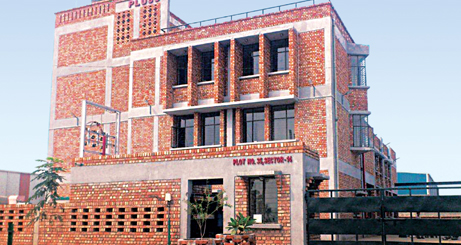Space Air Distribution refers to the delivery of conditioned air within a room or space to achieve optimal indoor air quality, thermal comfort, and energy efficiency. Effective space air distribution ensures that air is circulated and diffused evenly, minimizing hot spots, drafts, and stagnant zones
Space Air Distribution can be classified by their primary objective, and the methods by which the objectives are attempted to be accomplished.
The objectives of Space Air Distribution can be classified as one of the following :
- Providing Occupant Thermal Comfort (and increasingly to ensure good air quality in occupied spaces)
- To support processes within the space, or
- A combination of (1) and (2)
The Occupied Zone is a space in any location where occupants normally reside, and, may differ from building to building. It may be application-specific, and should be carefully defined. The Occupied Zone is generally considered to be the room volume between the floor level and 6 Ft above the floor level. Refer ANSI/ASHRAE Standard 55 and Standard 62.1)
Space Air Distribution methods can be classified as one of the following :
- FULLY MIXED SYSTEMS (for example – Overhead Air Distribution) which have zero or very little thermal stratification of air in the Occupied Zone or Process Space.
- FULLY STRATIFIED SYSTEMS (for example Thermal Displacement Ventilation) have practically no air mixing in the Occupied zone or Process Space.
- PARTIALLY MIXED SYSTEMS ( for example, most Underfloor Air Distribution Designs) provide limited air mixing in the Occupied Zone or Process Space.
- UNIDIRECTIONAL AIR FLOW SYSTEM (for example a Laminar Flow System) is designed to ensure no mixing and maintain a consistent air flow pattern, ensuring that air always moves from a clean to less clean areas.
- PERSONALIZED SYSTEMS (for example Task / Ambient Air Distribution Systems) is an air distribution strategy that combines two different air supply methods to optimize IAQ, Thermal Comfort and Energy Efficiency.
Benefits of Proper Space Air Distribution:
- Improved Indoor Air Quality.
- Enhanced Thermal Comfort.
- Increased Energy Efficiency
- Better removal of Moisture and Pollutants.
- Reduced risk of Airborne Infections.
Indoor Air Quality (IAQ) and Space Air Distribution are crucial aspects of creating a healthy and comfortable indoor environment. IAQ refers to the quality of air within buildings, while Room Air Distribution focuses on the circulation and delivery of air within a room.
Factors that affect Indoor Air Quality are :
- Ventilation Rate (Air Changes).
- Air Filtration.
- Temperature & Humidity Control.
- Source Control (Chemicals, Mold, Radon, VOCs).
Selecting the most appropriate Supply Air Outlets for the application, Locating the Supply Air Outlets and Return Air Inlets that best provides proper mixing or intended stratification will ensure that Airborne Infection is contained and reduced. While designing a Space Air Distribution System, Design considerations should encompass the following :
- Room Geometry, Layout & Occupancy.
- Air Flow Rates and Air Flow Patterns.
- Supply Air Outlet Selection and placement.
- Return Air Inlet Sizing and placement.
- Conduct a thorough IAQ assessment.
- Optimize ventilation rate and air change effectiveness.
- Consider occupant feedback and preferences.
Some Applications like Health Care Facilities, Clean Rooms for Manufacturing Pharmaceuticals and Electronics, Data Centers will warrant specific considerations. Please refer to specific Standards and Codes for such Applications.
By prioritizing Space Air Distribution, building designers, engineers, and operators can create healthier, more comfortable, and energy-efficient indoor environments that support occupant well-being and productivity.


Leave a Reply
Your email address will not be published. Required fields are marked *